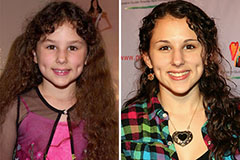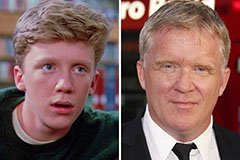Captivate the Jury: Important Aspects of a Powerful Trial Presentation
Essential components such as understanding the target market, crafting an engaging story, and grasping verbal and non-verbal communication are essential elements of an effective discussion. As these aspects link, they create a cohesive method that not only informs but also engages jurors on multiple degrees.

Understanding Your Audience
Recognizing your target market is a pivotal facet of reliable test discussion. An effective presentation depends upon the ability to understand the demographics, worths, and predispositions of jurors. This comprehension informs how debates are framed, evidence is presented, and emotional appeals are crafted, making sure that the message reverberates with the jurors on an individual level.
Research shows that jurors come from diverse histories and might have differing levels of comprehending regarding lawful procedures. In addition, understanding the jurors' possible predispositions and life experiences enables the test presenter to prepare for objections and address worries proactively.
Effective trial presentation additionally entails observing jurors' reactions during the procedures. Involving with jurors as individuals instead than a cumulative device is vital in promoting a solid connection in the courtroom.

Crafting an Engaging Narrative
Crafting a compelling story is important in assisting jurors through the intricacies of a situation. A well-structured story not just simplifies complex legal principles yet likewise involves jurors on an emotional level, making the info more relatable and remarkable.
To achieve this, attorneys need to start by determining the core message they want to share. This message ought to reverberate with the jurors' worths and experiences, cultivating a link that goes beyond plain truths. The story should unravel rationally, presenting events in a clear series to avoid confusion. This sequential method can aid jurors follow the development of events, highlighting reason and result.
Integrating human elements-- such as personal stories or stories-- can additionally improve the narrative's effect. These elements stimulate compassion, allowing jurors to imagine the effects of the instance on realities. Furthermore, using a constant style throughout the discussion enhances the major disagreement, making it less complicated for jurors to retain crucial points.
Eventually, an engaging story changes a trial discussion from a plain address of facts right into a persuasive story that astounds the jury, motivating them to deliberate with both reason and emotion.
Utilizing Visual Help
Including aesthetic aids into a test presentation can substantially boost jurors' comprehension and retention of info. Visual products such as charts, layouts, pictures, and video clips can change intricate legal concepts and proof right into easily absorbable styles. By involving numerous senses, these help allow jurors to visualize the case's crucial elements, making it simpler for them to comply with along and understand intricate information.
Additionally, properly designed visual aids can stress important points and emphasize partnerships between different items of evidence. Timelines can effectively highlight the series of occasions, while annotated pictures can make clear specific details appropriate to the instance. This not just help in understanding however also reinforces the narrative presented by the attorney.
It is vital, nonetheless, to make sure that visual aids matter, clear, and professionally presented. Extremely complex or chaotic visuals might overwhelm jurors and interfere with the message. When used deliberately, visual aids offer to complement the oral disagreements and improve the total impact of the trial presentation. Inevitably, efficient aesthetic interaction can be an effective tool in convincing jurors and aiding them get to educated conclusions.
Grasping Verbal Interaction
Efficient spoken interaction is essential in a trial presentation, as it functions as the main methods whereby lawyers share their debates and get in touch with jurors. Understanding this ability includes quality, persuasion, and engagement. Lawyers need to express their points clearly and briefly, avoiding legal lingo that Website might puzzle jurors. Simpleness in language promotes understanding and aids jurors grasp intricate issues presented throughout the test.
In addition, tone and pacing dramatically effect how messages are received. A certain tone shares authority, while proper pacing enables jurors to absorb details without feeling overwhelmed. Lawyers need to likewise vary their singing inflections to highlight key factors and preserve jurors' rate of interest throughout the presentation.
In addition, the organization of verbal debates is vital. Structuring the narrative rationally and coherently helps jurors comply with the attorney's logic, making it much easier for them to maintain crucial details. Using influential methods, such as narration, can also boost the emotional vibration of the arguments offered, thereby developing a more profound link with jurors.
Ultimately, understanding verbal interaction go to website not only enhances an attorney's situation yet also promotes trust fund and connection with the court, considerably boosting the possibilities of a positive decision.

Involving With Body Language
Nonverbal interaction plays a crucial duty in trial discussions, usually sharing messages that words alone can not express. Body movement, including gestures, stance, face expressions, and eye get in touch with, dramatically affects exactly how jurors perceive the reliability and sincerity of the speaker. A certain position, with shoulders back and an open posture, can instill trust fund, while closed-off body movement might suggest defensiveness or uncertainty.

Face expressions should show the emotions connected with the case, reinforcing the story existing. A genuine expression during a touching moment can elicit compassion and reinforce the emotional charm. Inevitably, mastering body movement is important for efficient test presentations, as it improves verbal interaction and develops an engaging visibility that reverberates with the court.
Conclusion
To conclude, captivating the court demands a tactical strategy that includes recognizing the target market, crafting a compelling story, utilizing visual help, mastering spoken communication, and engaging via body language. Each component plays a crucial role in developing a powerful test presentation that resonates with jurors on both emotional and intellectual degrees (trial presentation). By integrating these components effectively, his response attorneys can dramatically boost their capability to convince and influence court decision-making
 Jonathan Taylor Thomas Then & Now!
Jonathan Taylor Thomas Then & Now! Hallie Eisenberg Then & Now!
Hallie Eisenberg Then & Now! Anthony Michael Hall Then & Now!
Anthony Michael Hall Then & Now! Keshia Knight Pulliam Then & Now!
Keshia Knight Pulliam Then & Now! Pauley Perrette Then & Now!
Pauley Perrette Then & Now!